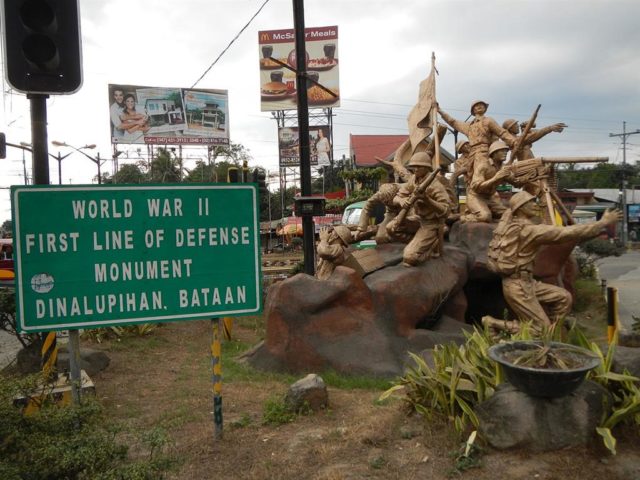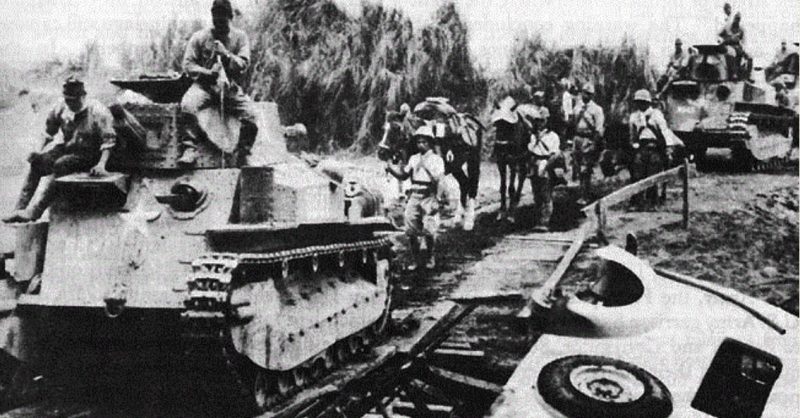It was January 2, 1942, and the fall of Manilla in the Battle of Bataan that would give the US its first taste of the anguish of war.
The Japanese had planned to cripple the US naval fleet at Pearl Harbor, keeping it from being an effective force in the Pacific and allowing the Japanese fleet unhindered access to the Pacific Rim. To keep the American forces off-balance, the Japanese followed up the attack on Pearl Harbor with an attack on the US base in the Philippines beginning on December 8, 1941. On December 22, Japanese ground troops landed and moved towards the capital city, Manila.
The servicemen at the US base in Manila were not prepared for modern war. General Douglas MacArthur had around 19,000 troops, but most were artillerymen, air crews, mechanics, sailors and support staff. There were almost no infantrymen or armor troops. The Philippine troops that served with the US troops to defend their country were worse prepared and evenly more poorly equipped than the US troops were.
On the other hand, the Japanese sent to the Philippines were combat troops. They were thoroughly trained and equipped with modern weapons. Because of the prior attack at Pearl Harbor, the Japanese were unrivaled in the Pacific in terms of air and naval supremacy. The US and Filipino forces had no chance to defeat the Japanese. How badly they were defeated, though, almost defies belief.

The Pearl Harbor attack was meant to destroy the US Navy. The attack on the Philippines was meant to destroy US air power. US intelligence was aware of a potential attack from Japan for weeks, yet the US forces in the Philippines were completely unprepared. A series of mistakes left the US helpless before the Japanese onslaught.
Early on December 8, 108 Japanese bombers and 84 Zero fighters started their attack on Clark Field. The majority of the US bombers and fighters were on the ground and freshly fueled. US antiaircraft shells exploded two to four thousand feet below the Japanese planes. Some of the three-inch guns had ammunition made in 1932 which failed to fire as many as five out of six times.
The Japanese were expecting the previous day’s attack on Pearl Harbor plus several hours of bad weather would have given the US base time to prepare their defenses. They were in disbelief at how easily they were able to destroy the US planes.
The US didn’t recover from the blow. After the first day of battle, the US Far East Air Force was no longer a threat in the region. Eighteen B-17 bombers were destroyed along with fifty-three P-40s, three P-35s, and about thirty other aircraft. The planes that survived the attack were severely damaged. By contrast, the Japanese lost seven fighter planes.
Now that the US Navy and Air Force were removed as threats, the Japanese were unstoppable in capturing the rest of the Philippines. In April 1942, the US surrendered the Philippines to the Japanese.
It’s estimated that thirty thousand Americans were killed or injured in the battle for Bataan which ended with the fall of Manila. Seventy-five thousand US and Philippine troops were taken prisoner by Japan and put on the infamous death march from Mariveles to San Fernando, a sixty-five-mile trip. As many as twenty-six thousand Philippine soldiers and fifteen hundred American soldiers died on the march from starvation, dehydration, malaria, or beaten to death by the Japanese guards.
The Japanese victory wouldn’t last. General MacArthur returned to lead the counter-attack and liberated the Philippines in 1945, The National Interest reported.
But, had the US defenses been sufficient, the Philippines may not have fallen. With US control of the Philippines, the Japanese may not have been able to advance so far throughout the Pacific, and the war in the Pacific may have ended much sooner.
